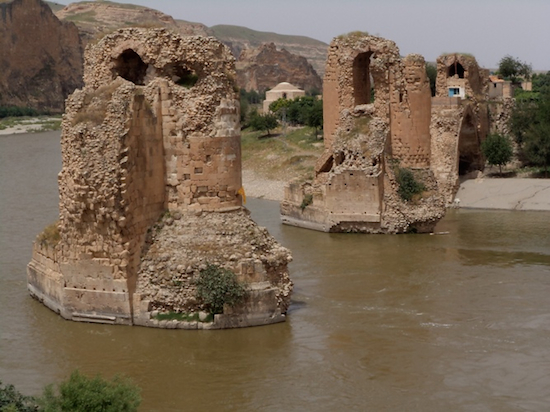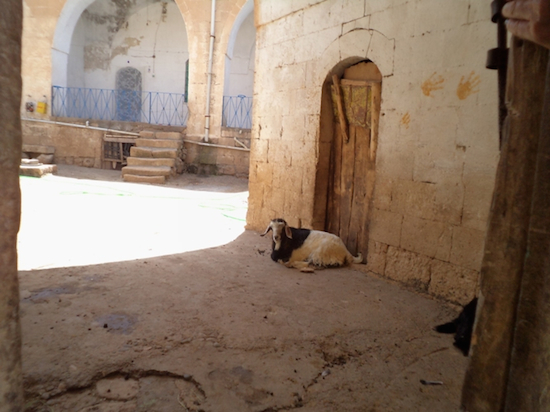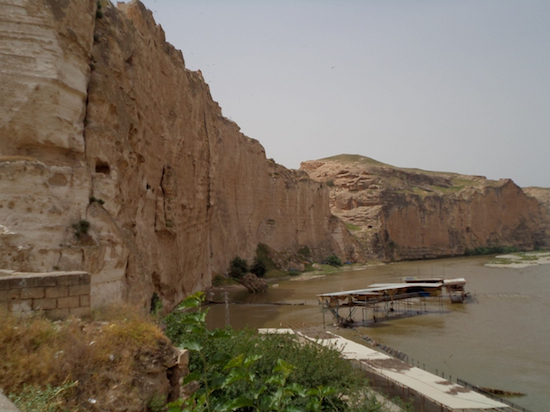

Until a few months ago, I lived in Didim near Bodrum on Turkey’s Aegean coast. Fascinating as the proximity of such outstanding archaeological sites as Ephesus, Pamukkale and Halicarnassus were, my itchy feet urged me to go further afield and to explore as much of the rest of Turkey as I could.
The best way to get around in Turkey is by long distance coach. There are several companies and the coaches are extremely comfortable and modern, providing drinks and snacks, TV and music and frequent stops along the way because they – mercifully – don’t have toilets. Attendants look after you, store your luggage, sprinkle your hand with lemon cologne and make your journey as comfortable as possible.
An added bonus is that surprisingly few foreigners use them, probably because of a totally unjustified prejudice that they aren’t safe. This means that once you are on the coach to the destination of your choice, at very reasonable prices at that, you are surrounded by locals. With typical Turkish hospitality, they even welcome the foreigner, share food and tea with them and, if you are able to utter only a few words of Turkish, they become your friends for life.
Early one morning, I boarded such a bus belonging to my favorite company KamilKoc. My destination was Urfa and Mardin in the far southeast of Turkey. It just so happened that I also made frequent trips to Istanbul and, on a visit to Istanbul Modern, the Museum of Modern Art, I came upon a photo exhibition featuring Hasankeyf in Mesopotamia, an ancient settlement on the shores of the river Tigris. Hasankeyf was in imminent danger of being devoured by the waters of a massive dam. These pictures were so mesmerizing that I decided on the spur of the moment to visit before it was too late.
The bus journey took more than 14 hours, but it was one of the most entertaining trips I have ever enjoyed. Hardly had the coach left the bus station, as my fellow travelers brought out the tapes and started to dance in the aisle. The bus shook so much from the festivities, I was afraid it might come off the road. Thankfully the driver was used to this kind of entertainment and kept it steady. Next were the food baskets, homemade pastries and other delicacies offered to the starving foreigner with a smile. They would not take no for an answer, even when my stomach reached bursting point.

Finally, we pulled into the central bus station in Mardin, a beautiful town spilling down a hillside in tiers of medieval buildings, narrow streets, mosques and workshops of the famous silversmiths of the region.
I took a taxi to my hotel which was on the top of the hill, just below a mosque and with fabulous views of the Tigris and the wide valley of Mesopotamia. I felt thrown back into biblical times sitting on the roof terrace and enjoying the very tasty and famous Mardin kebab.
The next day, I hired a car and asked the driver to take me to the river and Hasankeyf. In my experience, this is the best way to explore a country because you get a driver, interpreter, body guard and local expert rolled all in one. Ali didn’t disappoint.
The first thing he asked me after pulling up in his old but freshly polished Mercedes was if I had had breakfast. Nice as the hotel was, breakfast was nothing to write home about and I said so. He only lifted a finger and started jabbering on his mobile. Then he grinned. “Surprise, madam,” he said. “You’ll be my family’s guest”.
It turned out, that he took me to his home where his mother and sisters had laid on a Turkish breakfast spread for me, the likes of which I had never had before. We were sitting on the floor and comfy cushions and stuffing our faces with dish after dish and gallons of tea until it was time to set off for Hasankeyf. With kisses, embraces and good wishes we were finally on our way.

Approaching the mighty river Tirgris and seeing the medieval bridge spanning the width of the waters is a sight you will never forget. Along the shore Kurdish shepherds were tending to their flock of goats and sheep, a scene straight from biblical times. I asked if we could go down and talk to them and that’s where having an interpreter comes in handy. They showed me how to milk a goat and a good laugh was had when I tried myself.
Perhaps it was just me, but the arches of the bridge looked to me like sad accusing eyes, as if they knew that modern times and the dam would put an end to their existence after hundreds of years dominating the mighty river Tigris. Not only is the bridge affected, but also countless manmade caves which line the surrounding mountains and other testimonies of time gone bye.
After many protests and stops to the project of the Illisu hydroelectric dam, the project was approved and relocation of the cave dwellers has already begun. Site like the mosque Ulu Cami and the Zeynel Bay Mausoleum will also be moved, similar to what happened in Abu Simble.
However, the place and its unique atmosphere will never be the same again, so visit before the waters devour a historic place which has survived for hundreds of years only to fall now victim to modern time. Whatever the final outcome, it’s one place in Turkey that you should not miss.
If You Go
The best way to reach Hasankey or Turkish Mesopotamia is by long distance coach from every major city in Turkey. There are several bus companies, the biggest one being METRO, KAMILKOC or Ulusoy. Urfa has an airport called Sunliurfa if you prefer to travel by plane. The region features continental climate with hot summer and cold winters. As for accommodation, there are many boutique hotels in Mardin and Urfa. If you’d like to find a private driver, it’s best to ask at reception.
Author Bio: Born in Germany, Inka obtained law degrees in Germany, The UK and Spain, running her own international law firm for over 30 years in London and Marbella/Spain. A few years ago, she turned novelist, travel writer and photographer. Her novel ‘The Househusbands Club’ won Readers Favorite Award in the US in 2009. Her latest book, ‘Istanbul, city of the green-eyed beauty’ is a literary guide to Istanbul following the footsteps of authors Barbara Nadel, Orhan Pamuk and Pierre Loti. Her travel articles have been published in GoNomad, Europe Up Close, Off Beat Travel, Literary Traveler and many more. She is a regular contributor to Travel Generation, all exciting, weather2travel and spain-holiday.com and she has recently been commissioned by BBC Travel. Her blog www.glamourgrannytravels focuses on her solo travel adventures around the world with the emphasis on luxury and comfort. Inka has lived in Switzerland, Miami, London, Beirut and Istanbul and has currently settled in the South of Spain.
[mappress mapid=”907″]
